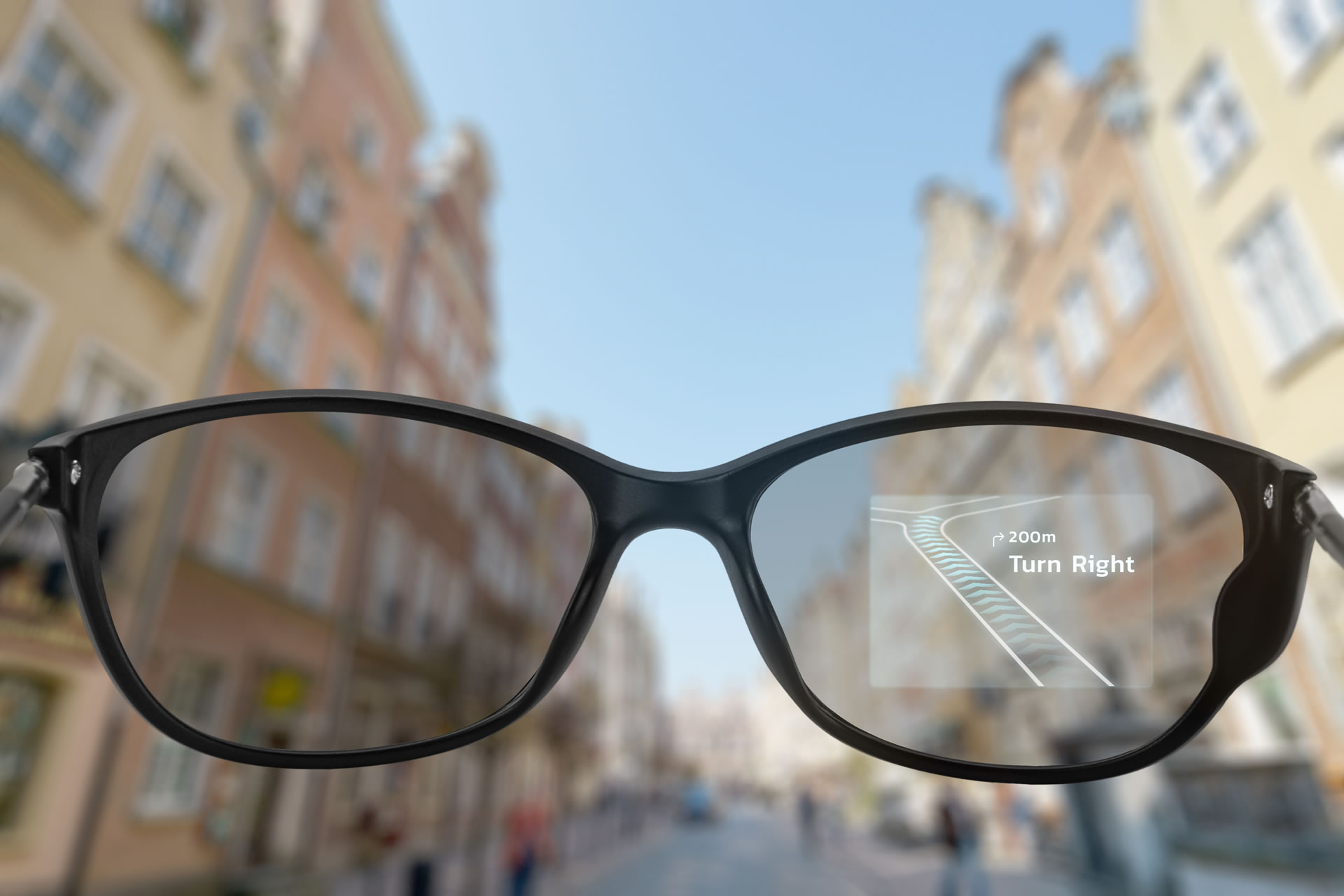Rumor has it that Apple is working on a new technology, code-named N421, that is going to kill the iPhone. And while this might sound a bit dramatic, it’s a rumor that has a growing amount of intrigue around it.
Apple’s iPhone is one of the most successful products of all time, revolutionizing technology and reshaping our everyday lives. But all things eventually evolve or get replaced—and with Apple’s reported ambitions in augmented reality (AR), it’s not impossible to imagine a world where the iPhone fades into the background. So, let’s take a look at what Apple Glasses are, when they might finally arrive, and why they might eventually render the iPhone obsolete.
What is Apple’s “Project N421” unofficially named Apple Glasses?
Apple Glasses , Code-named N421, is believed to be the tech giant’s attempt at developing augmented reality glasses. Unlike other AR and VR headsets, Apple Glasses aim to offer a seamless, lightweight experience, bringing digital information directly into your field of vision without the bulkiness of traditional headsets. The project represents Apple’s vision for a world where the line between digital and physical is blurred, allowing us to interact with our devices and information in a completely new way.
Apple has taken a careful, methodical approach to this concept. Project N421 isn’t a hasty attempt to ride a trend—it’s the product of years of research and development, with reports suggesting that the company’s vision for AR dates back as far as 2015. But it’s only in recent years that we’ve started to see serious movements, including high-profile AR hires, patent filings, and tech acquisitions, all indicating that Apple Glasses are slowly but surely inching towards reality. This project reflects Apple’s strategic approach: enter a market when they can completely redefine it, not just participate in it.
When Can We Expect Apple Glasses?
There have been endless rumors about the release date of Apple Glasses, and each year brings fresh predictions. However, credible sources and industry analysts suggest that we might see Apple Glasses come to market sometime between 2026 and 2027. That timeline aligns with recent developments, including the debut of the Apple Vision Pro headset—a device that’s believed to be Apple’s stepping stone into a broader AR ecosystem.
The Vision Pro, which is set for release in 2024, seems to be an “introduction” to augmented reality. Apple likely sees it as a way to familiarize users with the possibilities of immersive technology and to build a market that’s more receptive to the idea of a glasses-based AR experience down the line. If all goes according to plan, by the time Apple Glasses are ready for launch, consumers will already be primed and enthusiastic about the potential of augmented reality as an everyday technology.
Why Apple Glasses Could Eventually Replace the iPhone
The concept of Apple Glasses replacing the iPhone isn’t just a wild theory. It’s rooted in Apple’s consistent philosophy: to create devices that are essential in daily life and deliver an experience that is as intuitive as possible. Let’s explore the reasons why Apple Glasses could eventually make the iPhone obsolete.
Hands-Free, Immersive Experience
Imagine your iPhone’s capabilities, but without the need to pull a device out of your pocket. Instead of swiping and tapping, the digital world overlays naturally into your view. Messages, directions, and even FaceTime calls could appear right before your eyes without holding anything. Apple Glasses could provide this kind of functionality, making traditional smartphones feel outdated by comparison.
The goal of augmented reality glasses is to enhance and expand our experience of the real world rather than limit us to a screen. Apple has invested heavily in AR technology, suggesting that they are aiming for an experience where you could navigate through your day with a digital overlay that naturally fits into your physical environment. Once that’s possible, the concept of staring at a handheld screen all day could start to feel limiting and dated.
Improved User Interfaces and AI Integration
Apple has always pushed for innovation in user interfaces. If they manage to design Apple Glasses in a way that doesn’t rely solely on voice commands, but instead on a combination of eye movements, gestures, and advanced AI assistance, the glasses could be not just a replacement but an upgrade. With AI rapidly evolving, Apple Glasses could make use of personal data and preferences to deliver a deeply personalized, intuitive experience. Imagine your glasses knowing when you’re looking at a specific restaurant and instantly pulling up a menu or reviews without needing to prompt it.
A Platform for Future Innovations
Apple Glasses would serve as an ideal platform for the next generation of applications and services, especially with Apple’s robust App Store ecosystem. Just as the iPhone brought about the app revolution, Apple Glasses could redefine mobile applications. Gaming, entertainment, social media, education, and navigation would all take on new dimensions with an immersive, interactive format that a flat screen just can’t offer.
Moreover, as 5G networks and cloud computing improve, the need for a powerful device in your pocket diminishes. Apple Glasses could offload much of the processing to the cloud, reducing their size and weight and allowing for an experience that’s constantly connected and updated without the need for a separate device.
A Strategic Move Towards Wearable Dominance
Apple is no stranger to wearables, having successfully dominated the smartwatch market with the Apple Watch. Apple Glasses would be a natural extension of this wearable ecosystem, providing users with yet another way to stay connected without carrying a bulky device. If Apple succeeds, they could create a seamless ecosystem where the Apple Watch and Apple Glasses work together, making the iPhone redundant.
The glasses would handle communication, navigation, and content consumption, while the Apple Watch could monitor health and fitness, leaving fewer roles for a smartphone to fill.
A Future Beyond the iPhone: Are We Ready?
As exciting as this future sounds, it raises an intriguing question: are we truly ready to integrate digital information so seamlessly into our reality? With Apple Glasses, the digital world would no longer be something we pull out of our pockets; it would be woven directly into our everyday view, a constant companion, a silent guide. But as technology gets closer to our senses and merges with our perception, it also gets closer to our private lives and thoughts.
Apple Glasses could represent not only the end of the iPhone but the beginning of a new relationship with technology—one where the boundaries between human experience and digital enhancement blur like never before. It’s an ambitious vision, but will we embrace it, or will we come to miss the simplicity of our beloved handhelds?
If Apple Glasses do indeed kill the iPhone, it might not be a “death” at all but an evolution. And maybe, just maybe, that evolution will redefine not only the way we use technology but also how we define reality itself.





